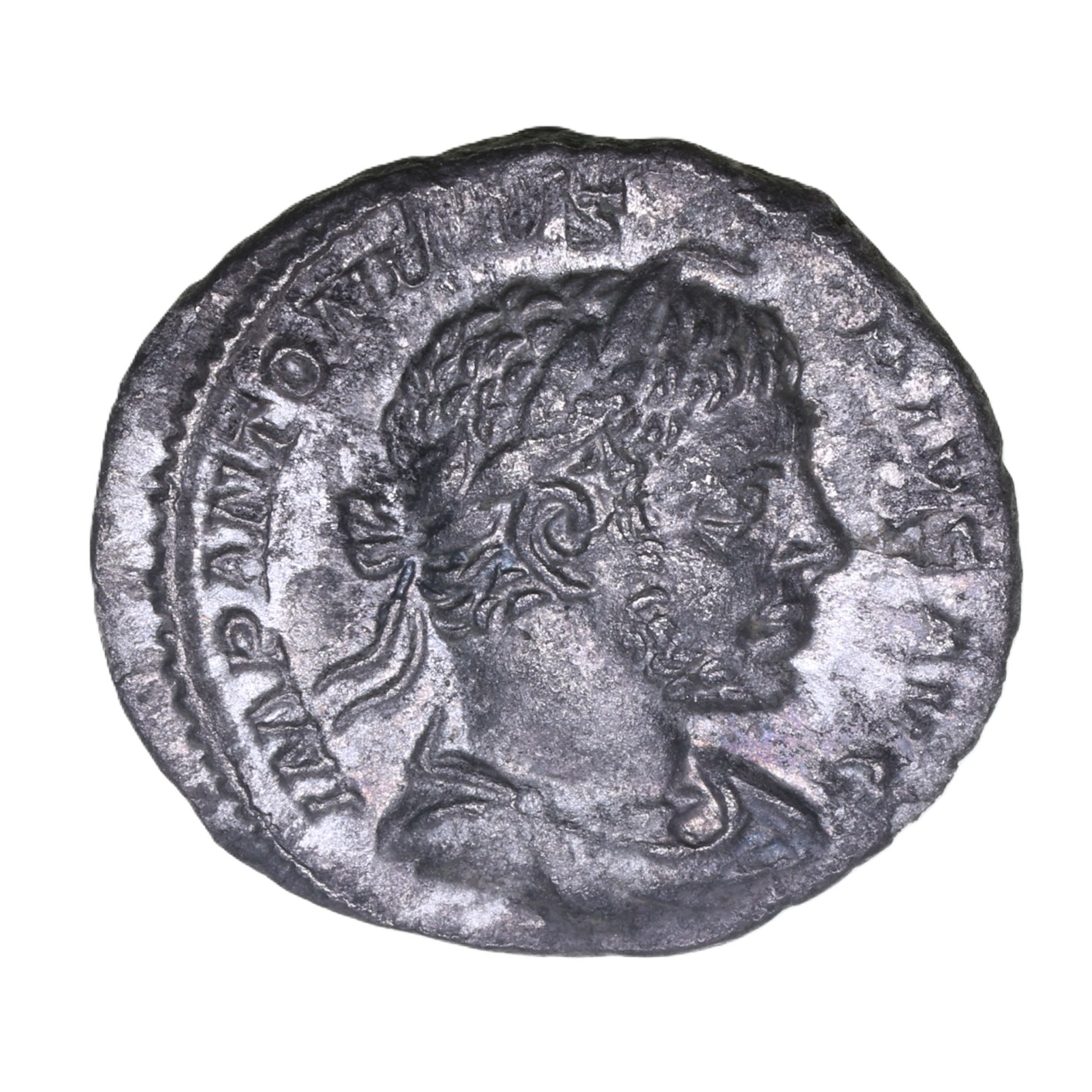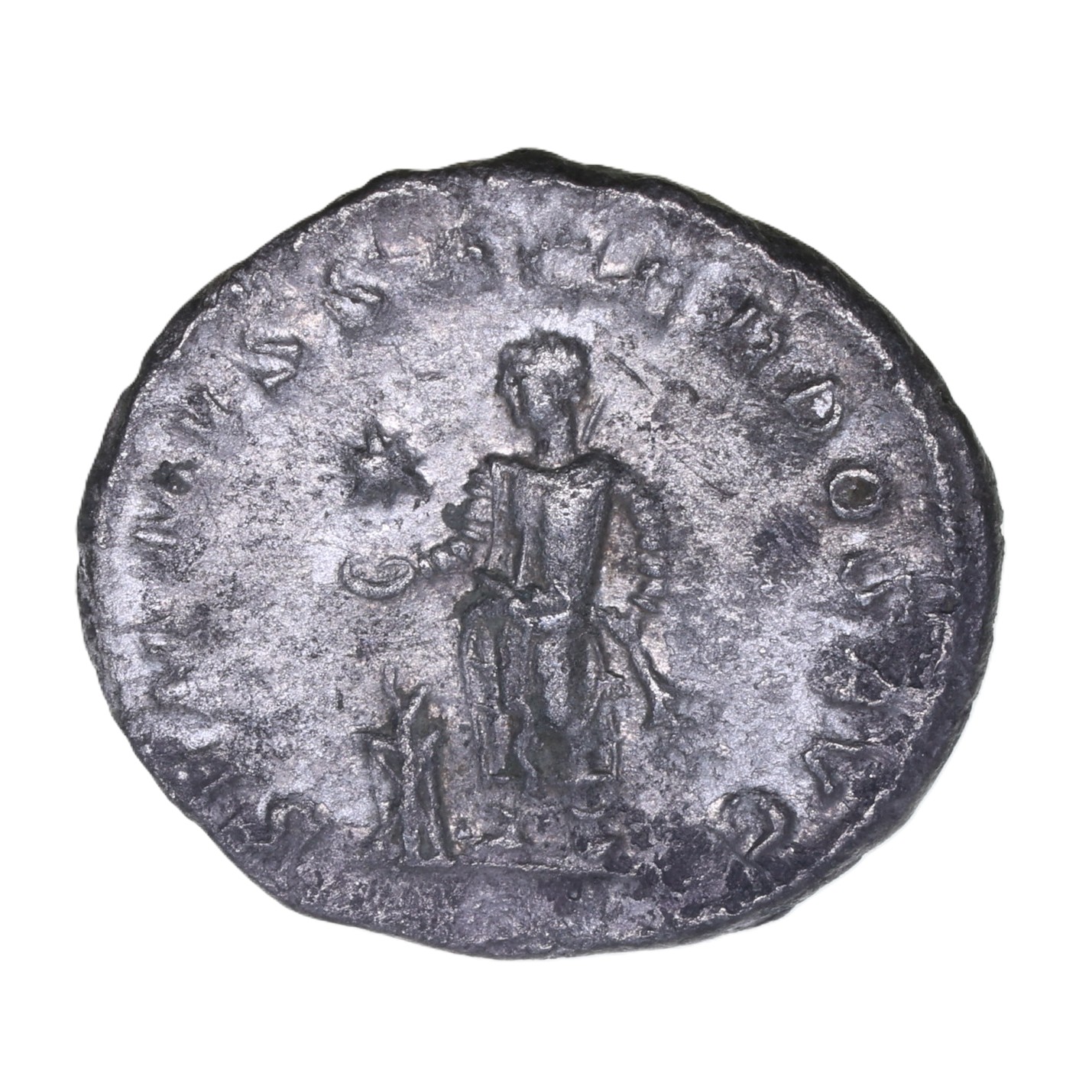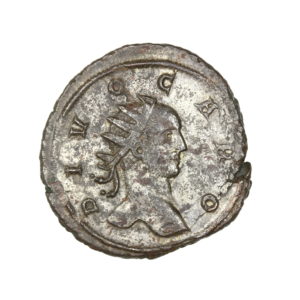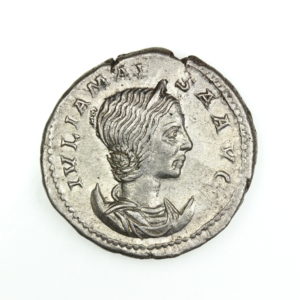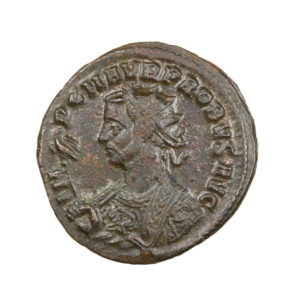Elagabalus AD 218-222 Silver Denarius Rome * British Find*
£79.00
Elagabalus AD 218-222 Silver Denarius
Elagabalus sacrificing
Rome mint
RCV7518; 19mm, 1.64g.
This coin was found in the vicinity of Beckfoot Roman Fort, Cumbria.
Classical References for Bibra
The sole classical geographical source for the Roman name of the Beckfoot fort is the Bribra entry in the Ravenna Cosmology (R&C#119), which appears between the list entries for Alauna (Maryport) and Maglona (Old Carlisle).
The Bibra Garrison
To date, only one inscribed stone has been uncovered from Roman Beckfoot, which fortunately provides the name of one of its garrison units; Cohors II Pannoniorum, a five-hundred strong infantry unit from the province of Pannonia, the region of the modern Czech Republic.
Elagabalus
Born around AD 204, Elagabalus or Heliogabalus, also known as Marcus Aurelius Antoninus, took his name from a sun god Elah Gabal and the black stone which he worshipped as a priest. A son of Julia Soaemias, elder daughter of Julia Domna’s sister Julia Maesa the rumour spread that Elagabalus was in fact the son of Caracalla to whom he bore a strong resemblance. This ruse was successful in assuring the boy of strong army backing when there was a revolt against Macrinus in AD 218. Proclaimed emperor, when the two armies met shortly afterwards near Antioch Macrinus suffered a resounding defeat. Macrinus fled but was shortly afterwards captured and killed.
Elagabalus proceeded to Rome along with his black stone which he had enshrined as the principal deity of Rome above Jupiter. Marrying Julia Paula in AD 219 Elagabalus soon began to exhibit fanatical behaviour which was encouraged by his promiscuous mother. His sexual depravity shocked Rome as did his marriage to the Vestal Virgin Aquilia Severa in AD 220. His reign became infamous for its debauchery and became one of the strangest in the history of the empire. Eventually Roman society turned and shortly after his cousin Severus Alexander was appointed his heir and Caesar Elagabalus was murdered, along with mother the hated Julia Soaemias. Their bodies were dragged through the streets and dumped in the Tiber.
1 in stock

